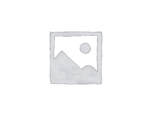Description
 (this is not the stock cover photo)
(this is not the stock cover photo)
Friendly Fire Pack 11
Friendly Fire Pack 11 contains eight scenarios featured in the Friendly Fire 2017 ASL tournament.
This scenario pack can be ordered here.
Scenarios: 8
Year of Publication: 2017
Price: 110 SEK (~14 USD)
Average Scenario ROAR Recommendation:
Average Scenario ROAR Balance:
FrF85 Junkers Junkyard

Ypenburg Airfield, Netherlands, May 10, 1940: The Germans had an ambitious plan: to knock The Nether-lands out of the war in a single day. Airborne troops would first capture three airfields near The Hague, then the Dutch cabinet and the queen. Ypenburg airfield was defended by two grenadier companies, about two dussin AA guns and six Landsverk armored cars. An early-morning bombing attack and Fallschirmjäger both failed to neutralize the AA defenses, and the slow Junkers carrying the airlanded main force met a devastating fire as they came in for their approach.
Designer: Mattias Rönnblom
FrF86 Belgian Tigers

Kapelle op den Bos, Belgium, May 17, 1940: In 1935, the Belgian government agreed to purchase 25 French-built AMC 35 tanks, armed with a 47 mm gun and a Hotchkiss MG. Over the next years, for economic and political reasons, the order was reduced to only 10 vehicles. When Hitler’s army invaded Belgium on 10 May 1940, the AMC 35s were the best armored vehicles in the Belgian arsenal. By 16 May, German forces had broken through Belgian lines along the entire front and two of these tanks were about to charge into battle for the first time.
Designers:
- Peter Struijf
- Chris Mazzei
FrF87 Mormal Forest

Northwest of Locquignol, France, May 20, 1940: The battle of France raged on. The 4. Panzer-Division was tasked to seize Aulnoye-Maroilles line and continue to secure the northwest edge of the Mormal forest. The division’s reconnaissance battalion passed through the forest near Locquignol without enemy interference. Two hours later, the reinforced Schützen-Regiment 12 followed in its tracks. By then the road was closed by competent hands of French colonial troops supported by Renault R35 tanks of the 39e bataillon de chars de combat.
Designer: Mattias Rönnblom
FrF88 Panzer Shield

Ryschkowka, Belarus, July 13, 1941: On 12 July, Guderian’s Panzergruppe 2 had two bridgeheads across the Dnepr; one east of Kopys and Shklov and the Bykhov bridgehead south of Mogilev. Mogilev’s defenses had been under construction since late June, and were by now deep and extensive, with minefields, anti-tank ditches, trenches and log bunkers — all in an reminiscent of World War I. XXIV. Armeekorps was to attack out of the bridgehead to the north, and destroy the enemy southeast of Mogilev and open the Dnepr crossing, but its 4. Panzer-Division was quickly forced on the defensive.
Designer: Mattias Rönnblom
FrF89 Red Tears Shed on Gray

Karpova, Ukraine, August 18, 1941: Under German-backed dictator Antonescu, Rumania joined its Nazi ally in the fateful Operation Barba-rossa. After two months of defeats, the Soviet Army in the Ukraine was reeling. Second line units, factory militia and ageing equipment were thrown into the path of the Axis invaders. On 17 August, the Rumanian 11th Infantry Division approached the town of Karpova, a key railway junction 30 km northwest of Odessa. The factories and warehouses near the railway station were defended by a ragtag company of Soviet units.
Designers:
- Peter Struijf
- Chris Mazzei
FrF90 Speed is the Essence of War

Slim River, Malaya, January 7, 1942: The British were in full retreat from northern Malaya. Two battered Indian brigades were arranged in depth back through Trolak to the Slim River bridge. In the early morning hours of 7 January, a Japanese tank company accompanied by truck-borne infantry charged down the road. The Japanese tanks quickly overran the bulk of the 12th Brigade, and next up for lighting-fast defeat was the 28th Brigade. Because of very poor British communications, the brigade were unaware of the impending threat, and the Japanese caught them on the move.
Designer: Mattias Rönnblom
FrF91 Moonlight Drive

North of Yigo, Guam, August 8, 1944: Although the Japanese had been blasted out of Yigo, they had enough strength remaining to trouble the US 77th Infantry Division. Encouraged by a recent armored night raid, which had wreaked havoc in the lines of the 305th Infantry Regiment, the Japanese decided to put the 306th to the same test. Late in the evening, several enemy infantry patrols felt out the American positions. At 02:00 tanks were heard approaching from the north. The Americans readied bazookas and flame-throwers, the only anti-tank weapons available in the moonlit night.
Designers:
- Peter Struijf
- Chris Mazzei
FrF92 Arms Race

Lonnecker bridge, Twente Canal, Netherlands, April 1, 1945: The British Guards Armoured Division were ordered to break through the German lines and reach Hamburg via Bremen. In other sectors, the Germans were in full rout, but ahead of the British tankers was the experienced and battered, but still cohesive, 7. Fallschirmjäger-Division. A step on the way was the Lonneker bridge between the Dutch towns of Hengelo and Enschede, and the rocket-equipped Shermans of the 2. Squadron, 1st Battalion set to capture it in a surprise attack.
Designer: Mattias Rönnblom



Reviews
There are no reviews yet.